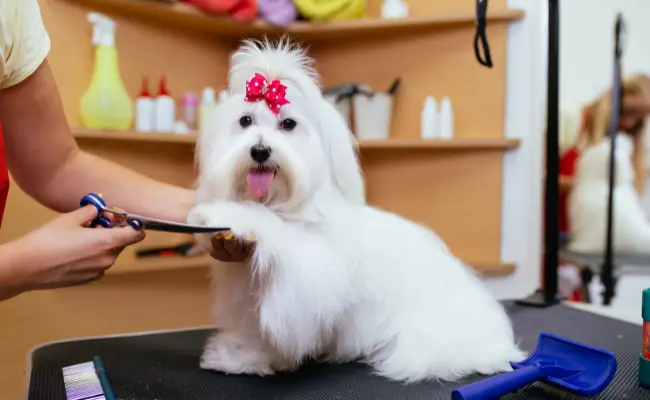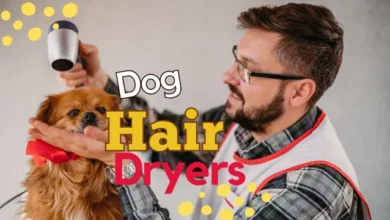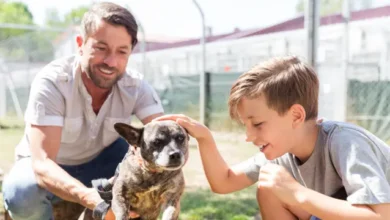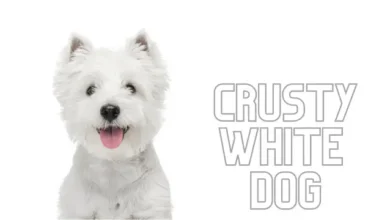Dog Grooming Tips and Tricks: Maintaining Your Dog’s Coat and Hygiene

MixbreedDogs.com is an Amazon Associate, and we earn from qualifying purchases.
Proper grooming is essential for your furry friend’s overall health and well-being. Regular grooming sessions not only help keep your dog’s coat clean and shiny but also promote a strong bond between you and your pet.
In this article, we will explore valuable dog grooming tips and tricks that will assist you in maintaining your dog’s coat and hygiene. From brushing techniques to bathing guidelines and nail trimming advice, let’s delve into the world of dog grooming and ensure your canine companion looks and feels their best.
Brushing Techniques
Regular brushing is a fundamental aspect of dog grooming, regardless of the breed or coat type. Brushing not only removes loose fur and tangles but also stimulates the skin and distributes natural oils for a healthier coat.
Here are some brushing tips to keep in mind:
a) Choose the right brush: Different coat types require specific brushes. For example, long-haired dogs such as Border Collies benefit from slicker brushes, while short-haired breeds such as Beagles may need a bristle brush. Consult a groomer or veterinarian to determine the most suitable brush for your dog.
b) Brush in the direction of hair growth: Start by gently brushing in the direction of the hair growth to avoid discomfort. Gradually work through the entire coat, paying special attention to areas prone to matting, such as behind the ears and under the legs.
c) Be gentle and patient: Approach brushing sessions with patience and a gentle touch, especially if your dog is not accustomed to the process. Use positive reinforcement, treats, and praise to make it a positive experience for your pet.
d) Regularity is key: Establish a brushing routine based on your dog’s coat type and shedding patterns. Some breeds require daily brushing, while others may only need it a few times a week.
Bathing Guidelines
Bathing your dog not only helps keep them clean and fresh but also removes dirt, allergens, and parasites. However, it’s important to follow certain guidelines to ensure a successful and stress-free bathing experience:
a) Choose a dog-friendly shampoo: Use a high-quality shampoo formulated specifically for dogs. Avoid using human shampoos, as they can strip the natural oils from your dog’s coat and cause skin irritation.
b) Prepare the bathing area: Select a suitable area for bathing, such as a bathtub or an outdoor space with warm water access. Place a non-slip mat to provide stability and prevent accidents.
c) Brush before bathing: Brush your dog’s coat thoroughly before the bath to remove any tangles or loose fur. This will help prevent matting and make the bathing process easier.
d) Use lukewarm water: Ensure the water temperature is comfortable for your dog. Use lukewarm water to avoid shocking or burning their sensitive skin.
e) Be mindful of the face and ears: Take extra care when washing your dog’s face and ears. Use a damp cloth or a gentle pet wipe to clean these areas, being cautious not to get water or shampoo into their eyes or ears.
f) Thoroughly rinse: After shampooing, rinse your dog’s coat thoroughly to remove all traces of shampoo. Leftover residue can cause skin irritation.
g) Towel dry and air dry: Gently towel dry your dog after the bath. If your dog has a thick coat, you may need to use a blow dryer on a low, cool setting. Avoid high heat, as it can burn the skin. Alternatively, allow your dog to air dry in a warm, draft-free area.
Nail Trimming Advice
Keeping your dog’s nails at an appropriate length is crucial for their comfort and mobility. Overgrown nails can cause pain, discomfort, and even affect their posture. Here are some tips for safe and effective nail trimming:
a) Choose the right tools: Use a pair of quality dog nail clippers or a grinder designed specifically for dogs. Clippers come in various sizes, so select one suitable for your dog’s nail thickness.
b) Familiarize your dog with the process: Introduce your dog to nail trimming gradually. Start by simply handling their paws, rewarding them with treats and praise. Gradually progress to clipping a small tip of the nail.
c) Identify the quick: The quick is the pink area inside the nail that contains blood vessels and nerves. Avoid cutting into the quick, as it can cause bleeding and pain. Trim small amounts at a time, and if unsure, consult a professional groomer or veterinarian.
d) Take breaks if needed: If your dog becomes anxious or stressed during the process, take breaks and continue later. It’s important to keep the experience positive and stress-free.
e) Utilize positive reinforcement: Reward your dog with treats and praise after each successful nail trimming session. This positive reinforcement will help create a positive association with the process.
Ear Cleaning and Dental Care
Apart from coat maintenance, it’s essential to pay attention to your dog’s ears and dental hygiene. Regular ear cleaning prevents the buildup of wax and reduces the risk of ear infections. Use a veterinarian-recommended ear cleaning solution and gently wipe the outer area of the ear with a cotton ball.
When it comes to dental care, brush your dog’s teeth regularly using a dog-specific toothbrush and toothpaste. This helps prevent tartar buildup, gum disease, and bad breath. If your dog is not accustomed to teeth brushing, start slowly and gradually increase the duration to make it a part of their routine.
Final Words
Maintaining your dog’s coat and hygiene through regular grooming sessions is essential for their overall health and well-being. By following the brushing techniques, bathing guidelines, and nail trimming advice provided in this article, you can ensure that your furry friend looks and feels their best.
Remember, each dog is unique, so it’s crucial to adapt the grooming routine to their specific needs. Additionally, don’t hesitate to seek professional help from a groomer or veterinarian if you encounter any difficulties or have specific concerns. Happy grooming and enjoy the bond you build with your beloved canine companion!



